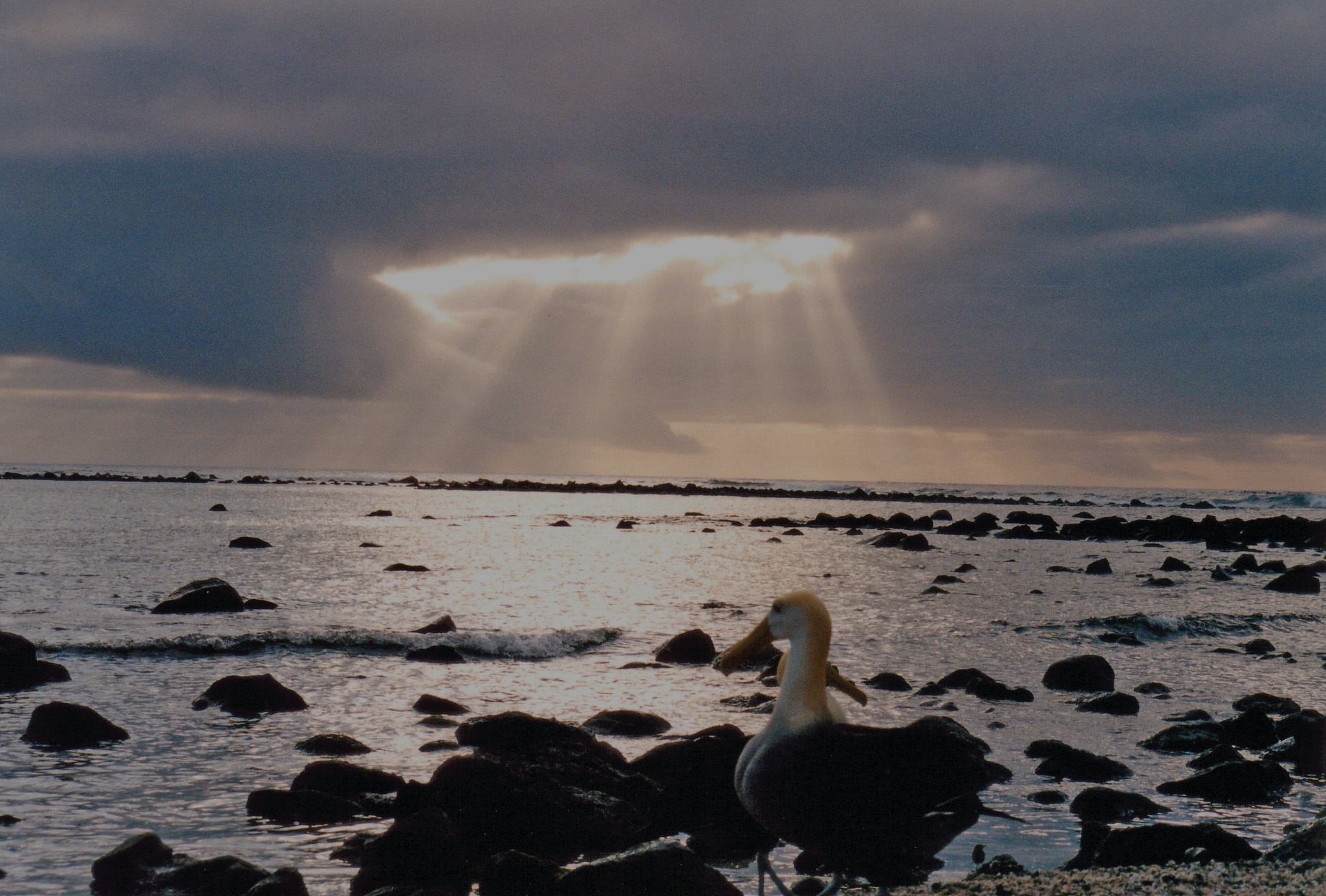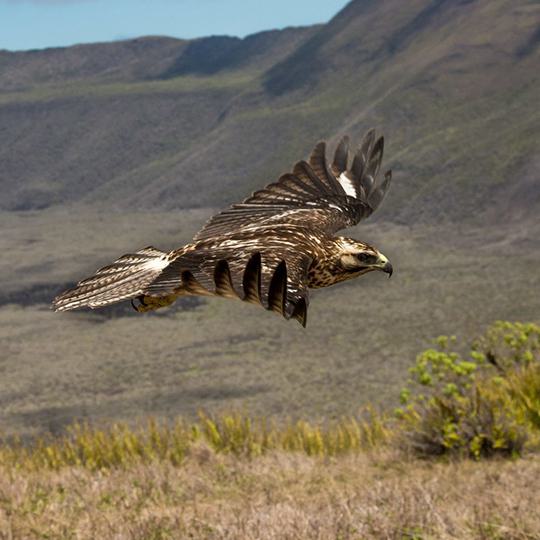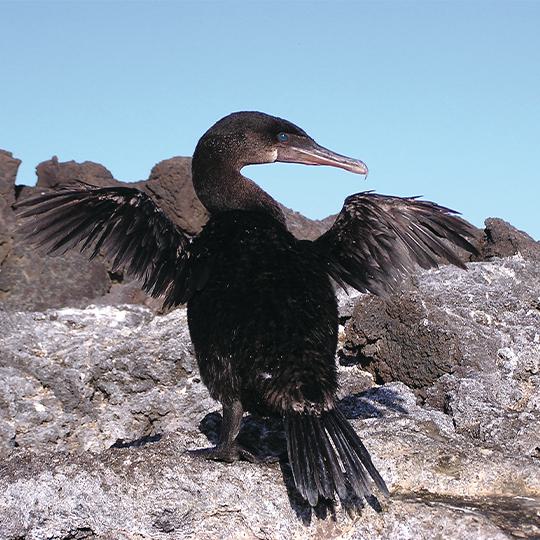
Center for Avian Health in the Galapagos Islands

Background
As every student of Darwin realizes, the 19 islands and numerous islets that make up the Galápagos are practically synonymous with the scientific study of nature and are among the most remarkable oceanic ecosystems in the world. The area’s isolated location, volcanic activity and tropical currents have combined to create an environment that has often been described as a living museum and nature’s own laboratory. The area is home to a highly concentrated selection of unique species that can be found nowhere else. The distinctiveness of Galápagos wildlife contributed to Darwin's formulation of the theory of evolution by natural selection. In contrast to the high number of bird extinctions in other island ecosystems, as best exemplified in Hawaii, the avian populations in Galápagos have not been devastated by introduced avian diseases. In fact, not one endemic bird species has gone extinct, though this may soon change. The cumulative effect of human population, tourism and the introduction of new forms of disease pose a universal threat to the remarkable wildlife that for millennia were the sole inhabitants of the island. A number of species are on the brink of extinction. The relatively sheltered Pacific environment that “protects” these birds also makes them immunologically naïve and vulnerable to introduced pathogens. The Saint Louis Zoo and University of Missouri-St. Louis, working with their partnering organizations, recognize this risk and have established an “early warning system” based on long-term disease monitoring of Galápagos birds to prevent the spread of avian diseases similar to those that have devastated the bird populations of Hawaii and other Pacific island systems.

St. Louis Interest
The Saint Louis Zoo and UMSL were happy to work with the Charles Darwin Foundation and Galápagos National Park to develop the first-ever avian health program in the Galápagos. With the Zoo's long history of quality avian health care and UMSL's experience with Galápagos bird studies, this partnership makes an excellent leader in this effort. Since our involvement in Galápagos in 2001, the Zoo and UMSL have successfully developed training courses for Ecuadorian personnel, held veterinary workshops in Galápagos, conducted major biomedical surveys and documented the increasing threat to endemic bird health from diseases associated with the growing poultry industry in the islands. The Center for Avian Health in the Galápagos Islands is essential not only for saving some of the rarest and most fascinating species in the world, but also for benefiting captive birds, since we can apply the lessons learned while studying wild birds to improved husbandry and health care for the Saint Louis Zoo collection.

Goal
To take a proactive approach in the study of avian diseases. By
providing forewarning of emerging diseases that threaten the bird life
in the Galapagos, biological catastrophes can be avoided elsewhere.
By
building capacity within the famous island chain, the increasingly
deleterious effects of human habitation and ecotourism will be
minimized.
Our goal is also to maintain a "zero extinction" rate — in contrast to Hawaii, where many endemic bird species have gone extinct — by monitoring avian health in the Galápagos Islands. Additionally, in collaboration with our partners, we work to ensure that preventive measures are implemented that protect against the introduction of exotic pathogens to Galápagos and thus avert the devastating effects of such pathogens on this unique avifauna.
Conservation Science
The Saint Louis Zoo-UMSL is leading biomedical surveys to establish the presence or absence of avian pathogens in free-ranging bird species in Galápagos. Many of these pathogens cause diseases with high morbidity and/or mortality in wild bird species globally. The Zoo currently has a full-time veterinary epidemiologist in residence at the Charles Darwin Station in Galápagos, conducting field and laboratory research with our colleagues there. Additionally, UMSL staff, Zoo staff and an average of 10 graduate students from UMSL come to Galápagos for three months each summer to conduct genetic and health studies on a variety of avian species. The Des Lee Professorship in Zoological Studies was established at UMSL to merge the research interests of the University with those of the Saint Louis Zoo. Dr. Patty Parker, who brings a wealth of invaluable knowledge and experience, is the first scientist to hold this endowed professorship. The Des Lee Professor serves as a mentor to some of the best and brightest graduate students worldwide; many student participants and collaborators are native to Ecuador. The seeds for the future are being sown today with the active engagement of those with a vested interest in the long-term sustainability of conservation in the Galapagos.
Current student projects include: 1) understanding the threats associated with the introduction of exotic pathogens such as avian malaria (a primary cause of Hawaiian bird extinctions) and West Nile virus on endemic birds and working to minimize these threats; 2) determination of infectious and parasitic agents in domestic poultry, as these birds pose an increasingly important threat at the "wildlife-domestic animal interface" in Galápagos; and 3) leading a domestic and wild bird health study on Floreana Island for the re-introduction of Floreana mockingbirds, one of the rarest birds in the world, a strategy necessary to avert the first Galápagos bird extinction in the short term. Also, we work closely with our partners to assess the need and feasibility of captive breeding of critically endangered species, such as the mangrove finch and Floreana mockingbird at the Charles Darwin Station, to provide "insurance" for wild populations. The ability to monitor parasites and diseases, such as avian pox, will provide the ability to detect, prepare for and ward off the debilitating effects of contagion.

